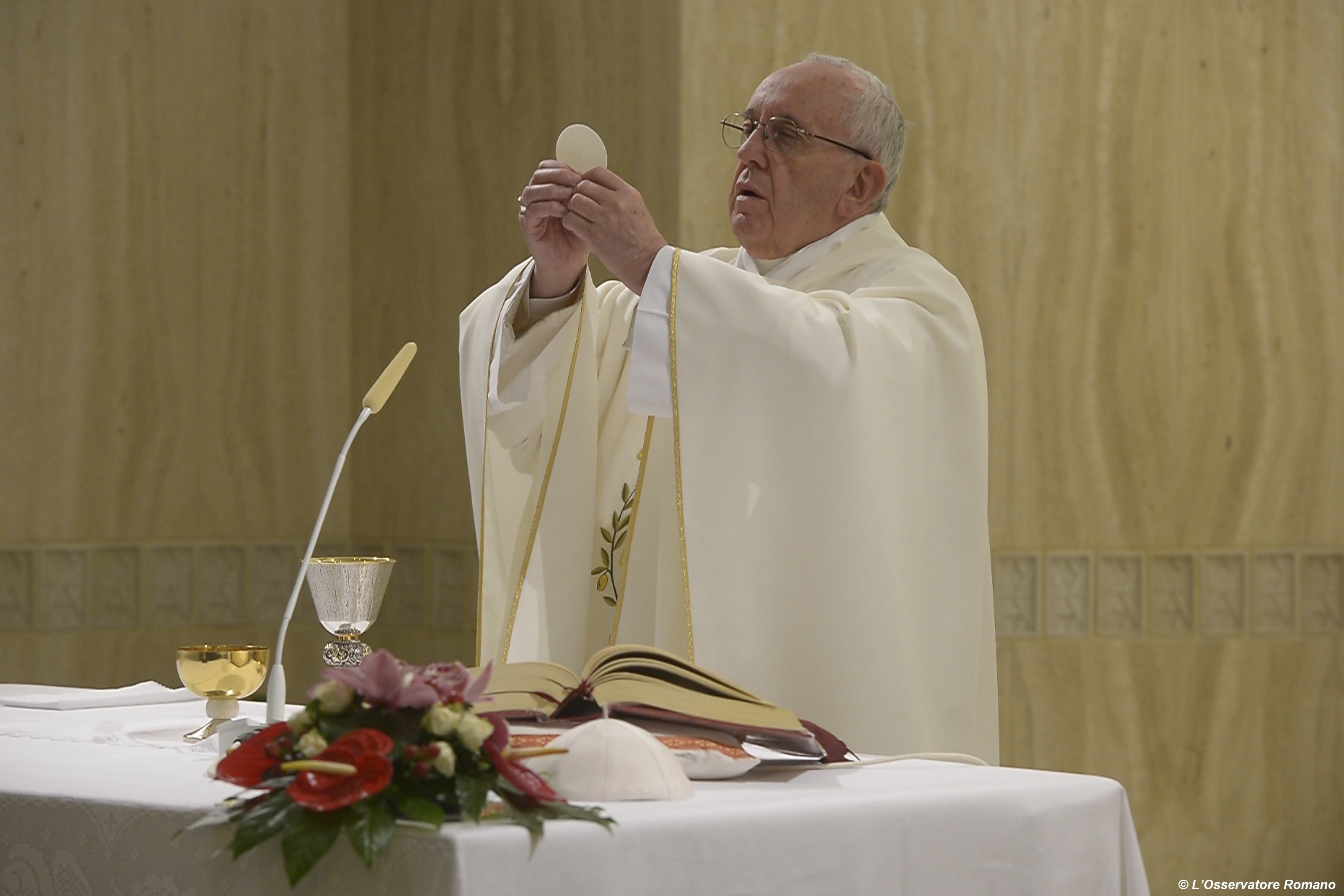Answered by Legionary of Christ Father Edward McNamara, professor of liturgy and dean of theology at the Regina Apostolorum university.
Q: From what point and up to what point exactly in the Mass is the part called the «consecration»? In the General Instruction of the Roman Missal, No. 43, paragraph 3, it says that «They (the faithful) should kneel, on the other hand, at the Consecration …» Is the consecration after the Sanctus acclamation until the end of the Eucharistic Prayer in the concluding doxology, with the people responding the great «Amen,» or from the epiclesis up to the institution narrative only with the elevation of the chalice? For sure, it is well understood that «where it is the practice for the people to remain kneeling after the Sanctus until the end of the Eucharistic Prayer and before Communion when the Priest says ‘Ecce Agnus Dei,’ it is laudable for this practice to be retained.» However, I am asking my question in view of the people in some parts of the Philippines who do not have this practice of kneeling throughout the entire Eucharistic Prayer and who, like me, are confused as to which part in the Mass exactly is the consecration. — J.Z., Tandag, Philippines
A: It is generally understood that the consecration, during which the people should kneel unless they are already kneeling, is that part of the Eucharistic Prayer that goes from the epiclesis, when the priest extends both hands over the gifts asking the Father to send the Holy Spirit to sanctify the gifts, until the priest invites the people to sing or recite the memorial acclamation following the proclamation of the institution narrative with the chalice.
The invitation and acclamation, however, do not form part of the consecration.
This interpretation can be confirmed by the General Instruction of the Roman Missal which says:
“151. After the Consecration when the priest has said: Mysterium Fidei (Let us proclaim the mystery of faith), the people sing or say an acclamation using one of the prescribed formulas.”
On those rare occasions when a priest celebrates alone, or in a concelebration with only priests present, the invitation and acclamation are omitted, and the consecration ends when the priest says, “Do this in memory of me” and genuflects in adoration. The Mass continues immediately with that part of the Eucharistic Prayer called the anamnesis in which the priest proclaims what we do in memory of Christ in celebrating his death, resurrection, ascension, etc. In a way, we can say that in this part of the prayer the Mass defines what it is.
* * *
Follow-up: Swings of the Thurible
Pursuant to our April 10 article on swings of the thurible two readers from Ireland had further comments.
One wrote, “I would say though that my experience in Ireland is that it is almost universal custom to use three triple swings when the Blessed Sacrament is exposed either in Benediction or during the Consecration (which is much rarer in recent times).
The other remarked: “The article quotes Peter Elliott as saying: ‘three double swings are made to incense … the body of a deceased person.’ Is the body to be incensed in this way instead of incensing [the coffin/casket containing] the body while walking around it, presumably using single swings of the thurible? Furthermore, if the custom of walking around the body in the casket/coffin still holds, should the body be circled counterclockwise, as was the former practice, or, as is commonly done by priests not formed in the previous style, clockwise?»
Regarding the number of swings, the norms referred to come from the Ceremonial of Bishops, No. 92, which also indicates the three double swings for the deceased.
However, some bishops’ conferences sought and obtained permission from the Holy See to continue to use the triple swings for the Blessed Sacrament. I am unaware if Ireland is among them, but it might just be our tenacious Celtic attachment to old ways.
With respect to funerals, although the Ceremonial of Bishops offers a universal and logical criterion, the liturgical books of funeral rites tend to defer to local custom with respect to many details. If the custom of incensing while walking around the coffin is widespread, there is no reason to eliminate it.
The almost universal practice with respect to the direction of incensing is moving counterclockwise, especially when incensing the altar.
However, if for a very good reason the opposite direction was considered necessary (perhaps due to some obstacle in the sanctuary), it could be done.
* * *
Readers may send questions to zenit.liturgy@gmail.com. Please put the word «Liturgy» in the subject field. The text should include your initials, your city and your state, province or country. Father McNamara can only answer a small selection of the great number of questions that arrive.



